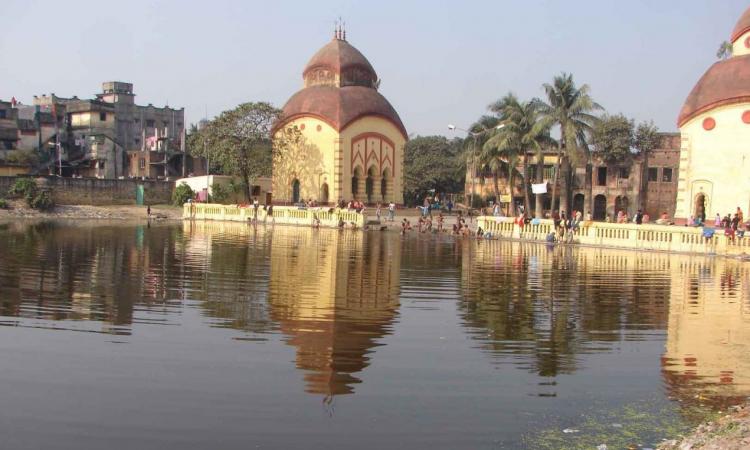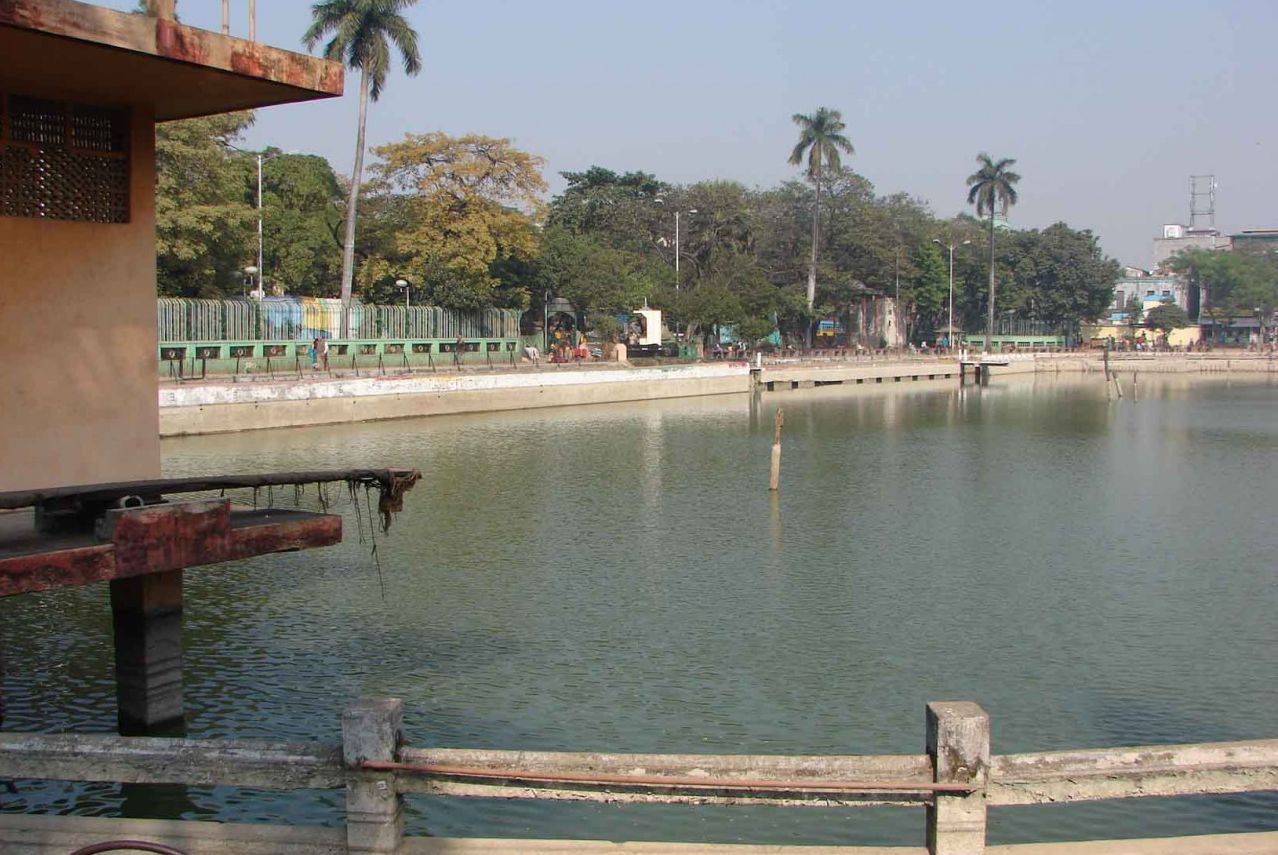
Mohit Ray of Vasundhara has written two books--"Five Thousand Mirrors: The Water Bodies of Kolkata” and “Old Mirrors - Traditional Ponds of Kolkata”. He speaks to India Water Portal on the water bodies of Kolkata.
In your book, you mention that about two and a half decades ago there were around 8,700 water bodies in Kolkata and that half of them have been lost now. Please tell us more about the empirical study.
The Kolkata Municipal Corporation (KMC) has remained reluctant to bring out a proper list of water bodies in the city. The first such list prepared in 1996 but brought out by the KMC only in 2001, recorded 1634 water bodies. In the meantime the issue of water bodies had begun to assume greater importance. A thorough search by the KMC led to the preparation of a list in 2006, which put the number of water bodies in the city at 3874. This means 2240 new water bodies got recorded in the new list. This is a 217% increase over the number of water bodies over a period of about 10 years. As no new pond has been excavated in the city in recent times, it means that the previous records were awfully inadequate. It also shows the lack of interest of the civic authority in this important water resource.

The National Atlas and Thematic Map Organisation (NATMO), a Government of India organisation, has come up with an Atlas of Kolkata (NATMO. 2006) with 282 detailed maps on a scale of 1:5000. The maps show water bodies very clearly, even the small ones. The water bodies from the 282 maps covering all the 141 wards were counted and the number of water bodies came to 8731. These water bodies were those that existed at some point of time in recent decades. From our own experiences and specific field searches, it can be said that many of the water bodies shown in the NATMO Atlas did exist but have been filled up in recent times.
To make a recent list of the existing water bodies we attempted to count the water bodies from Google’s Satellite image. The exercise done manually was quite a huge task. The counted number of water bodies was 4889. This search shows 1016 more water bodies than the latest KMC list.
What is the relevance of these water bodies?
Urban water bodies are a special group of surface water resource. A large number of people use these surface water sources for bathing, cleaning and other requirements. These include migrant labourers or the poorest people without any access to civic facilities. Many of these water bodies are used for pisciculture providing livelihood to hundreds of urban fishermen. These water bodies serve the purpose of open spaces in crowded urban localities. In many cases the banks of these water bodies are the only spaces for development of greenery.
Local natural life – aquatic, avifauna and terrestrial – sustains around these water bodies and they serve as the receptors for rainwater harvesting, maintaining local groundwater levels.
These water bodies act as a centre of localised social and cultural activities. There are clubs and temples by the side of these water bodies and often idols of deities are immersed in them. Fairs are organised on the fields next to these water bodies. Finally, they act as sources of water for fire fighting in the crowded and ever-expanding urban areas.
Are heritage water bodies dating back to several hundred years and related to the history and culture of the city also present? How are ponds characterised as heritage ponds?
Heritage water body is a new category. Kolkata Municipal Corporation (KMC) has a ‘Heritage Committee’ which has made a list of heritage buildings but the water bodies have not been considered. For search of heritage water bodies, the author considered a set of characteristics such as: the water bodies should be older than 75 years or more; association with some historical, cultural, religious events, personalities or families; and association with local history. These characteristics, however, often overlap.
The author’s search, till now, has identified 59 water bodies as heritage water bodies. Out of these, 34 water bodies (60%) have been referred for the first time. 36 identified heritage water bodies (61%) are more than 150 years old. The oldest water body is about 800 years old excavated by a local ruler as a part of a temple complex. There are two water bodies named after two queens of a local ruler which are about 450 years old.
Are these water bodies falling a prey to urbanisation and real estate development?
The disappearances of the water bodies are no doubt due to spread of urbanisation in a growing city. Another major impact on the environment of Kolkata and its surroundings has been the in-migration from East Pakistan (now Bangladesh) during partition and later. The refugees filled up marshy and low lying areas to recover land. From the 1970s due to expansion of the city and rapid urbanisation, the demand for housing grew. Kolkata has less open spaces and therefore the water bodies were filled up. There was no strict law about it too. Often the small water bodies became much polluted due to absence of any care and that provides an excuse to fill up the water bodies.
Urbanisation, negligent attitude of city planners to water requirement of common citizens, partition of the state and corruption in administration – all helped in the disappearance of hundreds of water bodies in the city.
Please tell us more about the institutions and mechanisms to look after the water bodies. After your painstaking efforts in tracing out the history of the disappearing ponds, have you been able to persuade the Kolkata Municipal Corporation to do something about the disappearing ponds?
There is a lack of proper institutional arrangement for management of these thousands of water bodies. KMC does not have any department or annual budget for doing so. It renovates some water bodies from time to time and undertakes beautification programmes. However, these are all unplanned activities often done due to the pressure from local elected representatives. There is no technical body to undertake the management of these water bodies some of which are under local community control.
There have been a number of local community movements to save the local water bodies, which has pressured KMC to take some action but it has not always worked.
Please tell us more about how your organisation–Vasundhara–has campaigned for restoration of Bikramgarh Jheel.
Vasundhara, a small non-profit organisation mostly provided awareness drive and technical suggestions for protecting the water bodies. It has always worked with some community movement. Bikramgarh Jheel is a large water body in south Kolkata. It was in a very bad condition and was being encroached. Vasundhara had discussions with local community organisations and they got together to save the water body. This led KMC to take over the management of the water body. At present KMC is renovating the water body with people’s involvement.
One part of the Bikramgarh Jheel was filled up by a big multistoreyed residential cum commercial complex known as South City. There was local protest, we went for legal action – but all that failed due to strong alliance between the real estate group, local politicians and the government.
What lessons can be drawn from your experiences to engage with urban communities in taking care of the water quality, environment and aesthetics of these ponds?
Until now, local community groups only manage these water bodies; there is no technical or administrative help. Sometimes financial help is obtained from the municipality as a one time grant. However, these local community groups through their own innovation and experiences have been able to manage the water bodies quite sucessfully. We have a lot to learn from them.
Can scientific commercial pisciculture raise enough funds to act as an incentive for a community to save wetlands?
Yes but first it needs to develop a proper community group to do the job. If there is no external assistance, successful commercial pisciculture is the only way to obtain funds to manage the water body. If proper guidence is available, then pisciculture can be practiced without compromising much with water quality and aquatic environment. There are a number of such success stories in Kolkata.
/articles/curious-case-kolkatas-missing-water-bodies